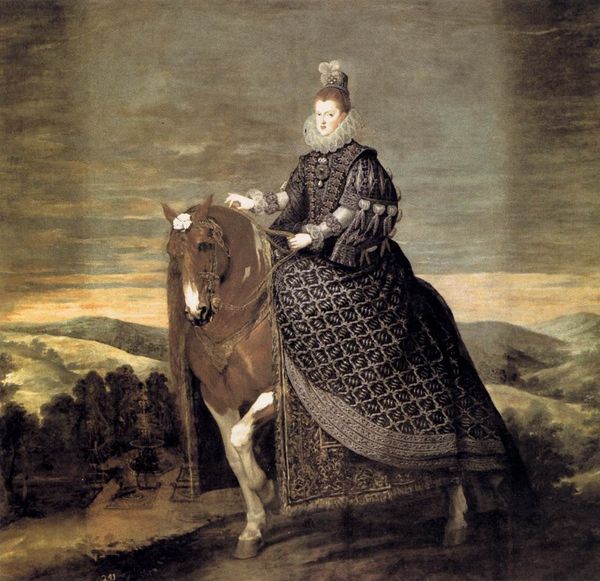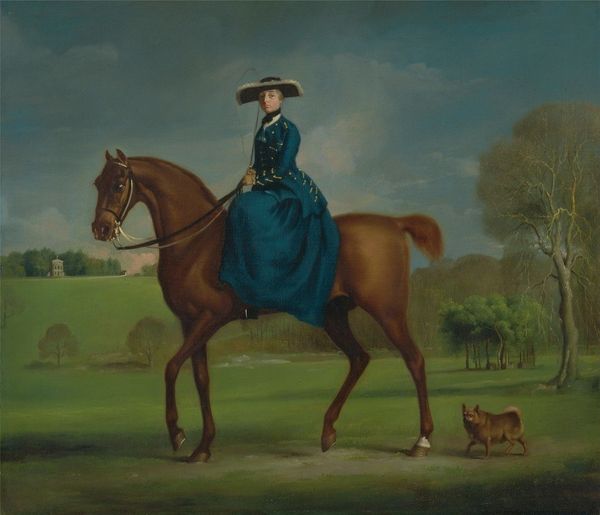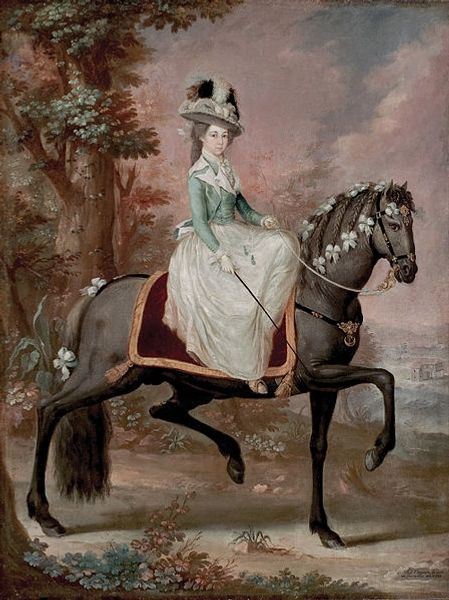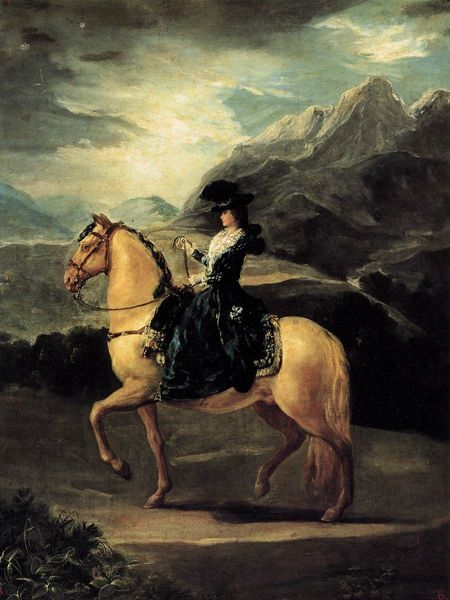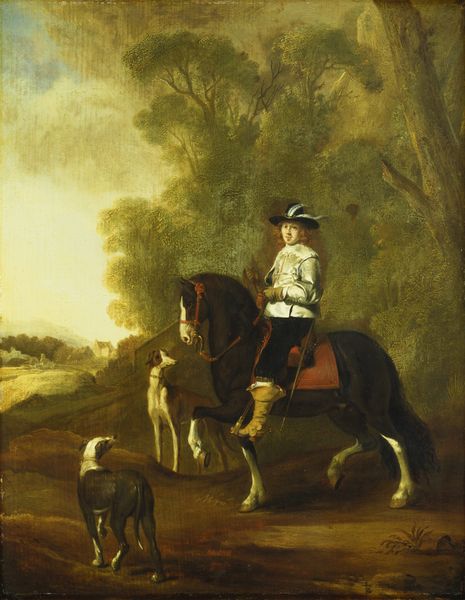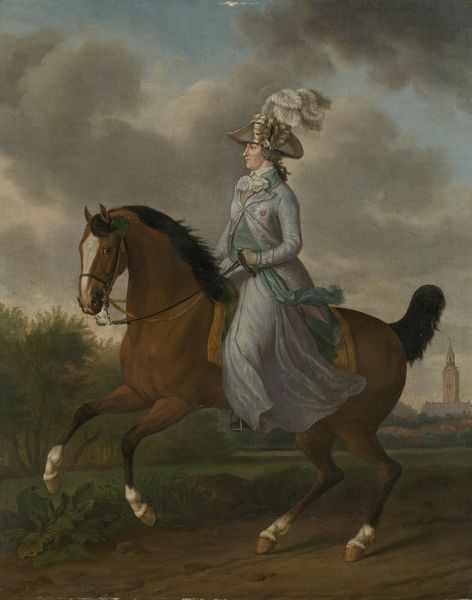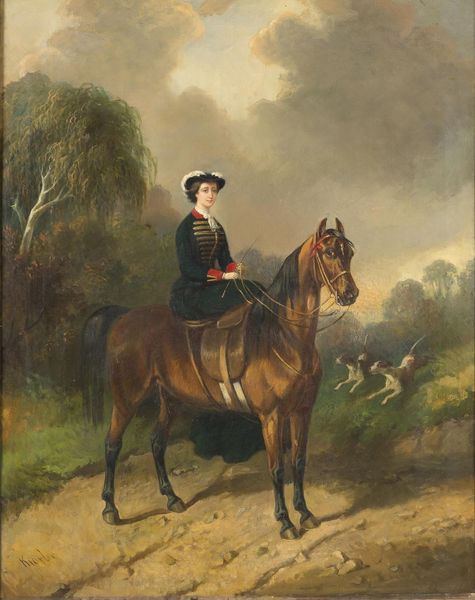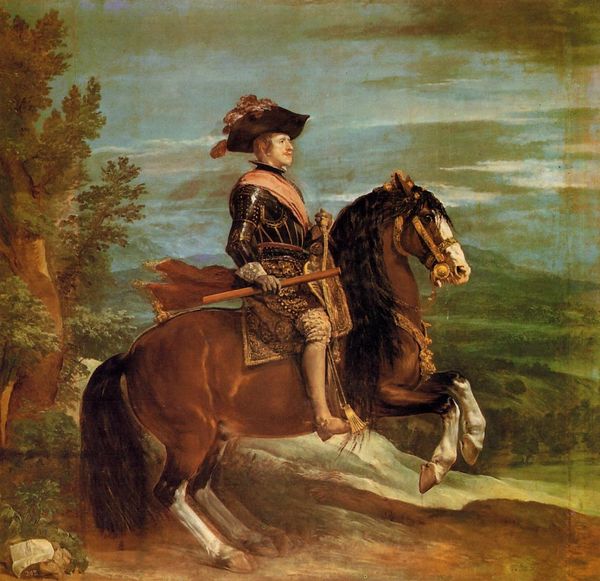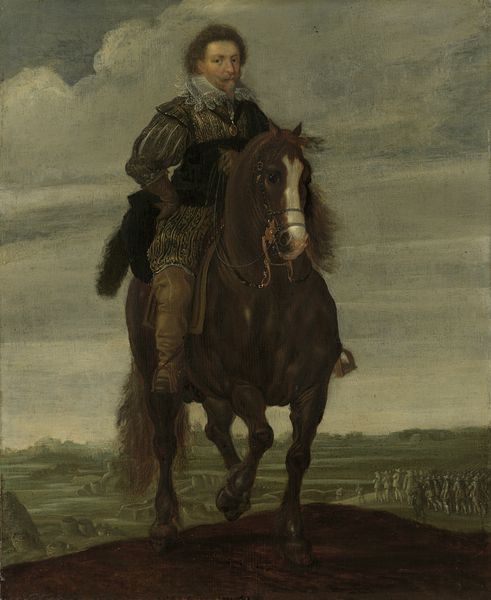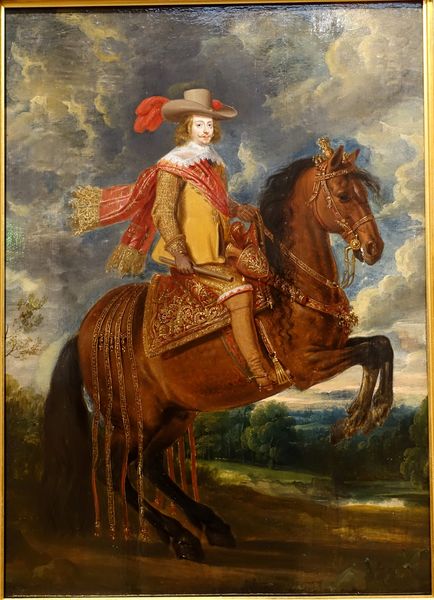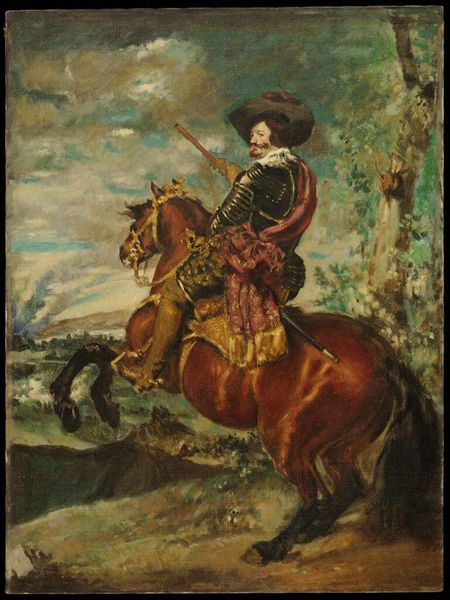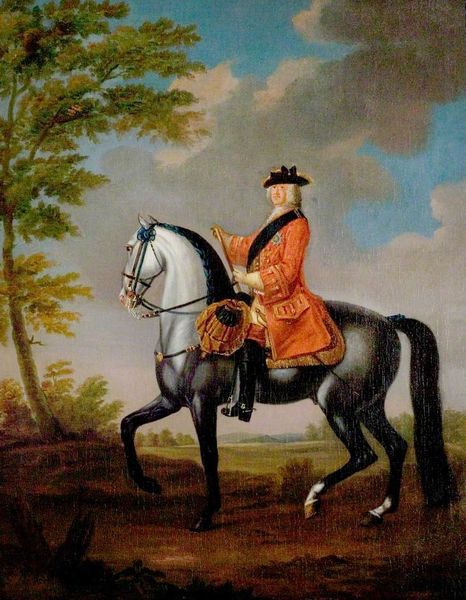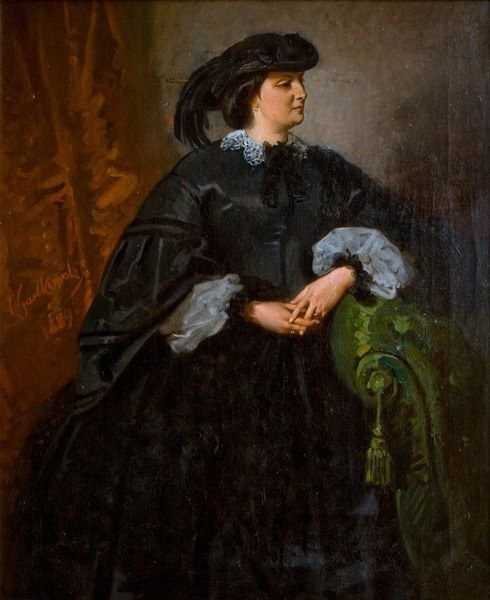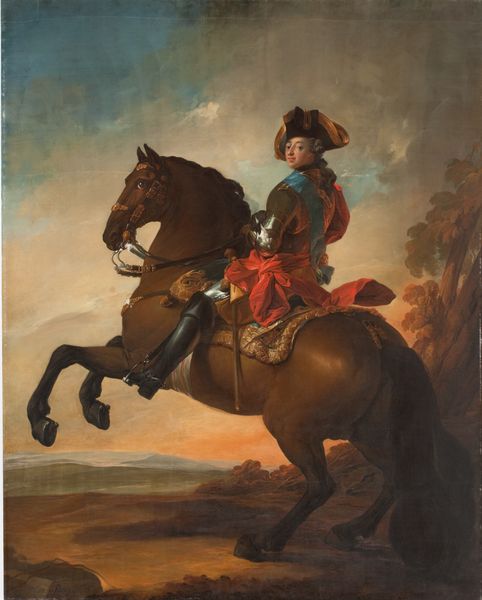
Copyright: Public domain
Curator: Welcome. Before us hangs Piotr Michałowski's “Artist's Daughter on Horseback,” painted in 1853. Editor: It's striking. There’s something about the impasto—thick applications of oil paint, visible brushstrokes—that gives it a real sense of immediacy, almost as if it were completed in a single session. Curator: Indeed. The bravura handling of the paint aligns well with Romantic ideals; a fascination with capturing raw emotion and transient moments. The almost monochromatic earth-tone palette and the hazy, indistinct background, creates an enveloping mood. Editor: What interests me is Michałowski’s choice of materials and their accessibility in 19th-century Poland. These weren't the materials of the elite, were they? His art speaks volumes about a changing social order and the accessibility to paint and canvas at the time. It highlights the increasing availability of art materials. Curator: That's an interesting viewpoint. We could also argue that it is about pictorial balance. Consider the composition—the dark mass of the riding habit counterweighted by the lighter tones of the horse and the overcast sky. The visual elements speak to Romanticism's themes of sublime beauty. Editor: It seems like Michałowski was likely deeply involved in grinding his own pigments and experimenting with various oil combinations. Think about the labour of pigment extraction, perhaps sourced locally. The artist, like the rider, uses certain materials to make their statement, and perhaps some constraints too. Curator: The layering and luminosity evident are techniques reminiscent of masters such as Géricault, especially when considering Romanticism. This reference places Michałowski within a specific historical trajectory of art-making. Editor: Well, looking beyond pure aesthetics and into production adds richness. Michałowski likely faced material challenges that affected technique and contributed to his individual voice, from sourcing materials to addressing the changing structures within the artist studio at that time. Curator: It appears that analyzing both perspectives illuminates layers of understanding inherent in this painting. Editor: Right. By examining both the internal structure of the work and its making, we get closer to Michałowski’s statement, I think.
Comments
No comments
Be the first to comment and join the conversation on the ultimate creative platform.
